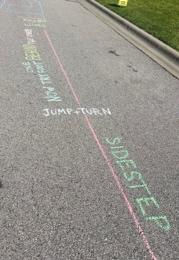Direct vs. Indirect Stuttering Therapy
- All Care Therapies

- Mar 22, 2022
- 2 min read

First, what is stuttering?
Nobody has smooth speech all the time. We all have “uh”s and “um”s, and sometimes we repeat sounds, syllables or words. These moments of non-fluent speech are called disfluencies.
Stuttering is when specific types of disfluencies are more frequent in speech. There are prolongations (stretching out a sound of a word), repetitions (saying a sound, syllable or word more than once), and blocks (struggling to get a word out).
Direct strategies for stuttering therapy
Direct approaches to stuttering aim to facilitate more fluent speech by targeting and modifying the child’s specific speech behaviors. Direct approaches to stuttering include fluency shaping and stuttering modification. Examples of fluency shaping include slowed speaking rate, increased pauses during turn taking, reduced interruptions while child who stutters is speaking, and relaxed breathing. The aim of fluency shaping is to remove as many moments of stuttering as possible. The steps to stuttering modification involve first identifying the stuttering pattern, then becoming desensitized to situations that provoke fear of stuttering, and finally modifying the moment of stuttered speech. The purpose of stuttering modification differs from fluency shaping in that it aims to reduce fears and avoidance behaviors around stuttering, in hopes that this can improve their ability to modify their moments of stuttering.
Indirect strategies for stuttering therapy
Indirect approaches for stuttering involve modifications to the environment rather than the actual stutter. While the aim of indirect therapy is still facilitation of fluent speech, this approach aims to do so by targeting, for example, parents’ speech, as well as the child’s emotions, attitudes and fears around stuttering.
How do these two strategies interact?
Both direct and indirect approaches to stuttering can be beneficial, but there are some factors to consider for each option. Indirect therapy has been proven more appropriate for children younger than 6 years old. If the child’s stutter has persisted beyond this age, indirect treatment becomes less effective. Similarly, using direct treatment on a child as young as 3 or 4 may be difficult, considering that they must be aware of their stutter in order to participate in this type of treatment. All things considered, a younger child may benefit from a combination of both direct and indirect therapy approaches for some time during their journey through stuttering therapy.
When considering the two approaches within direct treatment (fluency shaping and stuttering modification), these intervention styles can co-exist in treatment, as both bring benefits to the table! Fluency shaping aims to eliminate stuttering all together, which can make a person who stutters a more fluent, confident, better understood and less frustrated speaker. When considering stuttering modification, education, identification, desensitization, and reduced avoidance always have a place in therapy! Including both fluency shaping and stuttering modification is often a preferred approach, as it takes a holistic, client-centered approach to stuttering therapy.
Resources:
American Speech-Language-Hearing Association. (2021b). Stuttering. https://www.asha.org/public/speech/disorders/stuttering/
References:
Sidavi, A., & Fabus, R. (2010). A Review of Stuttering Intervention Approaches for Preschool-Age and Elementary School-Age Children. Contemporary Issues in Communication Science and Disorders, 37(Spring), 14–26. https://doi.org/10.1044/cicsd_37_s_14




Comments